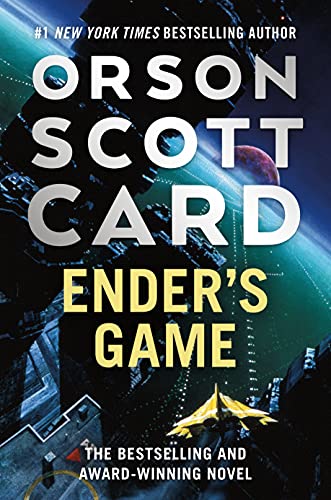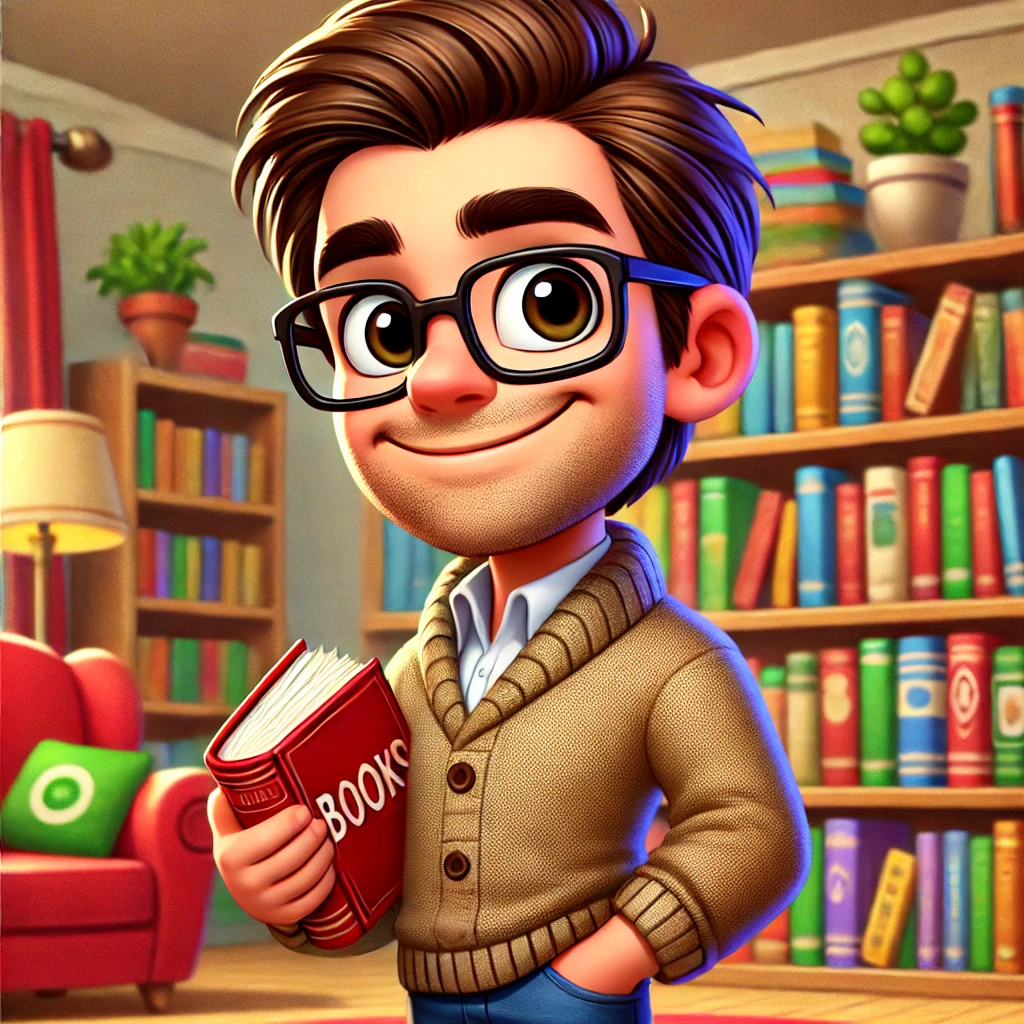Alright, buckle up, folks! This is my review of Ender’s Game. If you like clever kids, wild space fights, and adults who are way too sneaky for their own good, you might want to stick around. I read this with my friends, and we had debates, laughs, and even a heated argument over who would crush the Battle Room. I’ll break down the best bits and the things that made me scratch my head. Let’s see if this book is still worth your time—or if it’s just all zero gravity hype!
Ender’s Game Review
In a nutsheel
Ender’s Game by Orson Scott Card is a classic science fiction tale. We’re talking spaceships, genius kids, and aliens—not your average school playground. This book packs action, mind games, and a bit of heart. If you like stories about growing up fast, tough choices, and lots of lasers, this book’s got you covered.
At its core, the story follows a boy named Ender who goes from bullied kid to big hero (sorta). The world’s leaders think he’s the only hope to save Earth from a bug-like alien threat, so they ship him off to a military school in space. Themes of friendship, leadership, and what it means to do the right thing run all through the book. Don’t worry, though—there’s plenty of action and a bit of humor, so it never feels like homework.
Character Growth and Relationships in Ender’s Game
Ender’s Game is one of those books that makes you feel like you could probably win a war with a stick and a shoelace if you just tried hard enough. The real magic, though, is the way the characters grow and get tangled up in wild, often awkward relationships. I remember reading it and thinking, “Wow, these kids are more grown-up than most adults I know. Also, why am I suddenly worried about my younger brother taking over the world?”
Ender Wiggin starts out as a smart but scared kid who gets yanked from his family and tossed into Battle School—basically space boot camp for geniuses. He struggles to fit in at first, but then you see him change as he faces bully after bully, and not just with epic zero-gravity dodgeball (which, by the way, I still want to try with my friends). His friendships with Alai and Petra stand out, showing that even in a school full of brainy brats, you need someone to watch your back.
The way Ender connects with other kids—like his silent bromance with Bean, and his weirdly complex sibling feels for Peter and Valentine—keeps things real and relatable. You root for Ender, but you also wish someone would sign this kid up for therapy. There’s tension, support, and a kind of family you build when you don’t have your real family around. It made me think about my own friends, and how we all help each other grow, even if we fight over video games sometimes.
Next up, we’ll blast off into the wild world of moral choices and manipulation—hang onto your socks, this ride gets twisty!
Moral Choices and Manipulation in Ender’s Game
Let’s talk about the time Ender Wiggin made choices that would give my conscience an upset stomach. Orson Scott Card, the author, really knows how to press the big old red button labeled ‘Moral Dilemma.’ In Ender’s Game, every other chapter seems to dish out a new test for Ender’s spirit. One minute he’s minding his own business in Battle School, the next he’s being nudged into situations that would make most grown-ups crumble. I once tried to trick my little brother into doing my chores by pretending it was a game—didn’t work, and he still brings it up at family dinners. The grown-ups in this book, though, they’d probably give me a medal for that kind of trickery.
Adults in Ender’s Game are the masters of manipulation. Colonel Graff and friends set up Ender like a chess piece, moving him from one moral mess to another. The worst part? Ender doesn’t know the full story until about 290 pages in. I felt for the kid. Talk about life not coming with an honest instruction manual. He isn’t just fighting aliens—he’s fighting to stay himself. And when he learns how far the adults have pushed him, it’s like realizing your game controller has been unplugged the whole time. Frustrating and heartbreaking all at once.
What really stuck with me is that Ender’s greatest fights are not on the battlefield, but in his own head. He wants to win, but not lose his soul. The book pokes you right in the feels, questioning right and wrong in a way that sticks. Next up, grab your combat boots—I’m marching into the world of game strategy and battle scenes, where zero gravity and laser guns make dodgeball look like a stroll in the park!
Game Strategy and Battle Scenes in Ender’s Game
Let me tell you, if you ever wanted to see what it feels like to lead a bunch of kids in zero gravity and still end up sweaty, Ender’s Game delivers. The battle room scenes are where the book really earns its stripes. The strategy and planning that Ender pulls off left me with my jaw hanging lower than my grades after a Mario Kart marathon. He doesn’t just play the game, he changes it! If you try to read this before bed, don’t expect to sleep—these chapters are packed with action so tense, you’ll be doing somersaults in your own mind.
One thing I loved about the strategy in Ender’s Game is how it always kept me guessing. Most books, you can call the winning move before it’s played. Here? Nope. Just when I thought Ender was about to lose, he’d pull out a wild tactic, like using his own teammates as shields or flipping the orientation of the entire team. It was like watching chess, laser tag, and dodgeball all mashed up, but with way more space suits and less apologizing after you hit someone.
All the other kids in Battle School think they’re hot stuff, but Ender plays three steps ahead. Even the teachers start to get nervous, which, as we know, is never a good sign. The way the battles ramp up in difficulty and the way Ender’s squad sticks together had me rooting for them, laughing, and sometimes yelling at the book like it was a TV. If you ever wanted to feel smart but also a little bit dumb (let’s face it, I never would’ve cracked Ender’s battle puzzles), this is the book for you.
Hold onto your helmets, because next up, we’re talking about the plot twists and the big, brain-busting ending!
Plot Twists and the Shocking Ending of Ender’s Game
Let’s talk about the big jaw-droppers in Ender’s Game. If you thought you could see the ending coming, you probably had your socks knocked off (and maybe your shoes, too). The book is packed with twists that sneak up on you faster than my cat trying to steal my sandwich. Just when you think you’ve figured it out, BAM, the story changes course. It’s like playing a game of chess and your opponent turns the board into a pizza.
The ending—whew!—that ending stays with you. I finished the last chapter and stared at the wall, rethinking my life and my choices in board games. Without spoiling too much, Ender learns a huge secret about the nature of the war. It’s emotional, shocking, and makes you question who the real bad guys are. Seriously, I almost called my mom to talk about my feelings, but she still hasn’t forgiven me for losing her library card in 2004.
The twist also brings up big questions about trust, leadership, and responsibility. I appreciated how the author didn’t sugarcoat things—sometimes life throws a curveball made of guilt and confusion. Ender’s reaction felt real, not like a movie hero who shrugs off trauma and goes for ice cream.
As for recommending Ender’s Game, if you want a story that sticks with you and makes you question the meaning of strategy, leadership, and maybe even your taste in snacks, this book is for you. I say grab it, read it, and prepare for some late-night existential thoughts. 8 out of 10 imaginary games won.
Conclusion
Alright, that wraps up my review of Ender’s Game. It has wild twists, smart battles, and a bunch of kids saving the day—just like a summer at my cousin Larry’s house, but with more lasers. Ender is easy to root for, even when adults mess with his head. It’s not perfect. Sometimes things feel a bit rushed, and the mind games are heavy. But if you like clever strategy, questions about right and wrong, and a book you can show off to your friends, Ender’s Game is worth a read. If you’re not into sci-fi or don’t like kids outsmarting everyone, you might want something else. For me, it was a blast. Now, if only someone would let me command a laser army…


